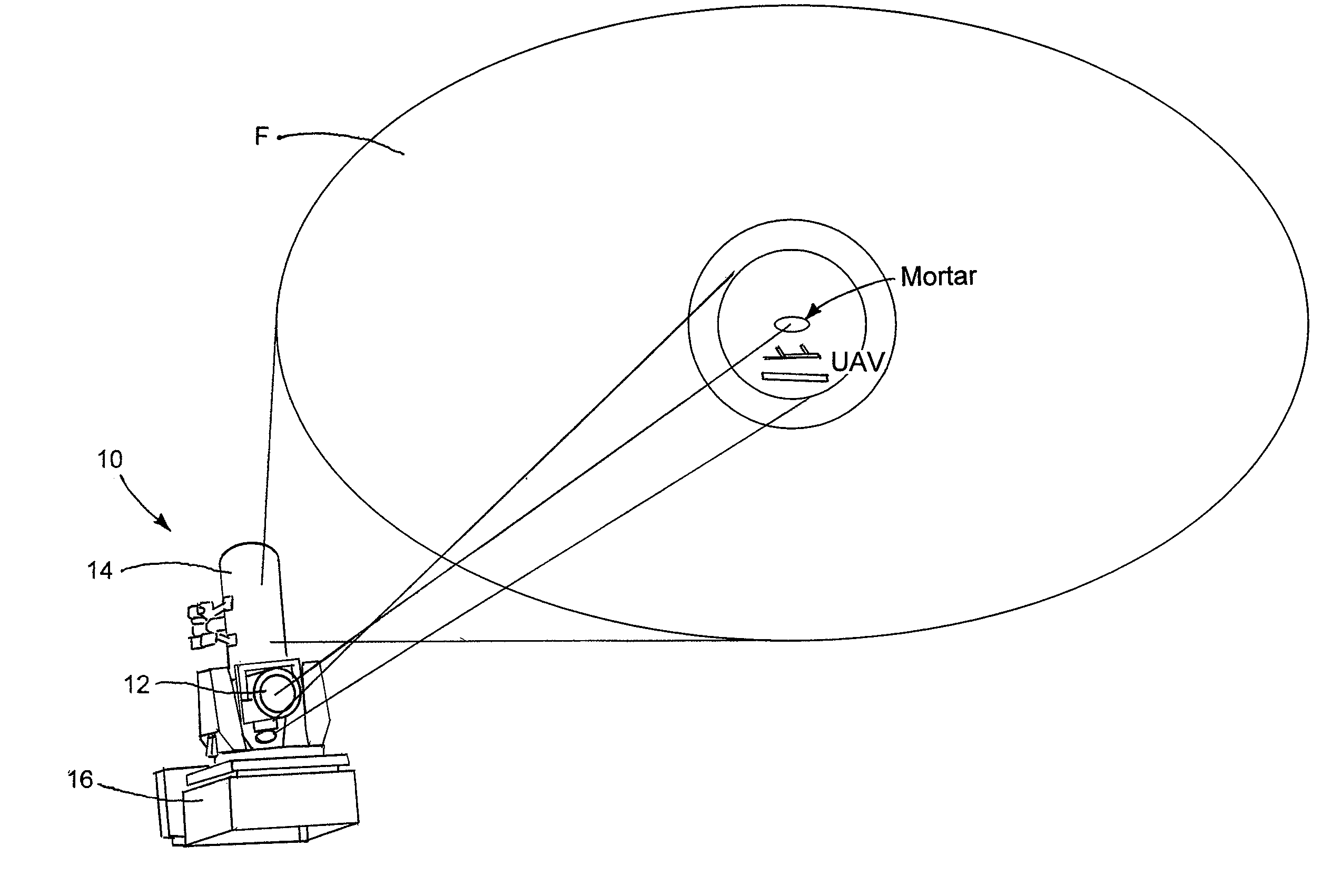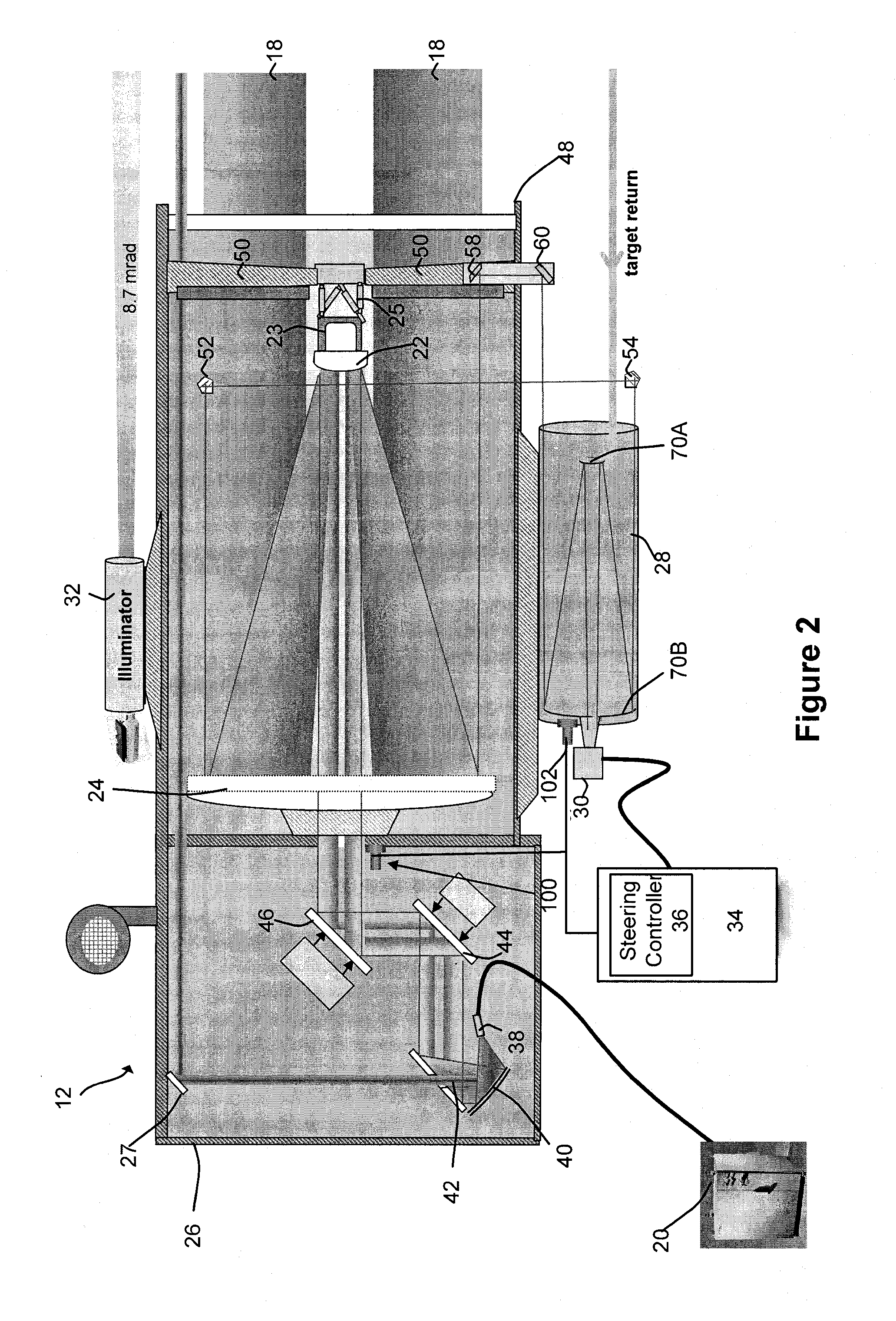Semi-active optical tracking system
a tracking system and semi-active technology, applied in the field of electromagnetic radiation tracking systems, can solve the problems of high cost, difficult acquisition of targets by passive systems, and high cost of active systems, and achieve the effect of enhancing the target signatur
- Summary
- Abstract
- Description
- Claims
- Application Information
AI Technical Summary
Benefits of technology
Problems solved by technology
Method used
Image
Examples
Embodiment Construction
[0024]The present disclosure relates to a tracking system and method for tracking airborne targets. The system generally includes an illuminator for generating electromagnetic radiation to be directed at an airborne target. The illuminator may be in the form of at least one of a solid-state laser, a fiber laser, or a laser diode array. The illuminator generally produces electromagnetic in the form of an output beam having a wavelength between visible (380 to 750 nanometers) and infrared (400 to 700 nanometers) regions of the electromagnetic spectrum. The output beam of the illuminator is directed to a target through a free-space coupled or a fiber-coupled delivery.
[0025]The system further includes a track telescope having a track detector configured to receive electromagnetic radiation reflected from the airborne target.
[0026]A processor is coupled to the track detector and a steering controller for a high energy laser (HEL) to generate a control signal for input to the steering con...
PUM
 Login to View More
Login to View More Abstract
Description
Claims
Application Information
 Login to View More
Login to View More - R&D
- Intellectual Property
- Life Sciences
- Materials
- Tech Scout
- Unparalleled Data Quality
- Higher Quality Content
- 60% Fewer Hallucinations
Browse by: Latest US Patents, China's latest patents, Technical Efficacy Thesaurus, Application Domain, Technology Topic, Popular Technical Reports.
© 2025 PatSnap. All rights reserved.Legal|Privacy policy|Modern Slavery Act Transparency Statement|Sitemap|About US| Contact US: help@patsnap.com



